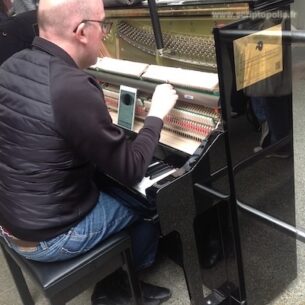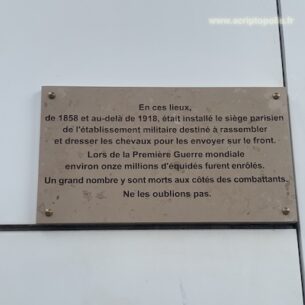Public intimate
By our guest: Victoria Brun
Paris, November 2024.
Walking along the platform of the Champs-Élysées Clémenceau subway station on line 1, I stumble upon an abandoned sign from the march organized by the Nous Toutes collective that same day against gender violence. It is not laid flat or thrown in the garbage can, but dutifully arranged upright, in a niche decorated with photographs of the Grand Palais, which is just above the surface.
I come across it just as the instruction of the so-called “Mazan rapes” trial has come to a close. I see in it the various issues that have agitated these 49 days of hearings. Firstly, it resonates with the testimonies of the friends, mothers, sisters and spouses of dozens of men who have repeatedly described themselves as generous friends, supportive fathers, devoted brothers, grateful sons and loving husbands. While the crime statistics are formal, we still find it hard to accept that our rapists are precisely the men closest to us, the ones we often knew and sometimes esteemed. Leaning back against a photo of a young boy, it goes on to question the importance of the educational dimension in the reproduction of rape culture. Does the systematic nature of sexual violence lead to a mechanical and immutable reproduction? And finally, it echoes a nominalistic controversy at the heart of the trial: is it proper to transform the name of the crime “rape” into the attribute of the person “rapist”? Is it possible to commit rape without being a rapist?
In the same way that feminist mobilizations strive to politicize the intimate sphere, this sign has been placed here, far from the route taken by the demonstration procession, in a corner of the platform, on the edge of public space. It lends itself only to attentive gaze, in an alcove reminiscent of the parade chambers where the bed was protected from view, or the salons of the Précieuses where confidences were shared.







